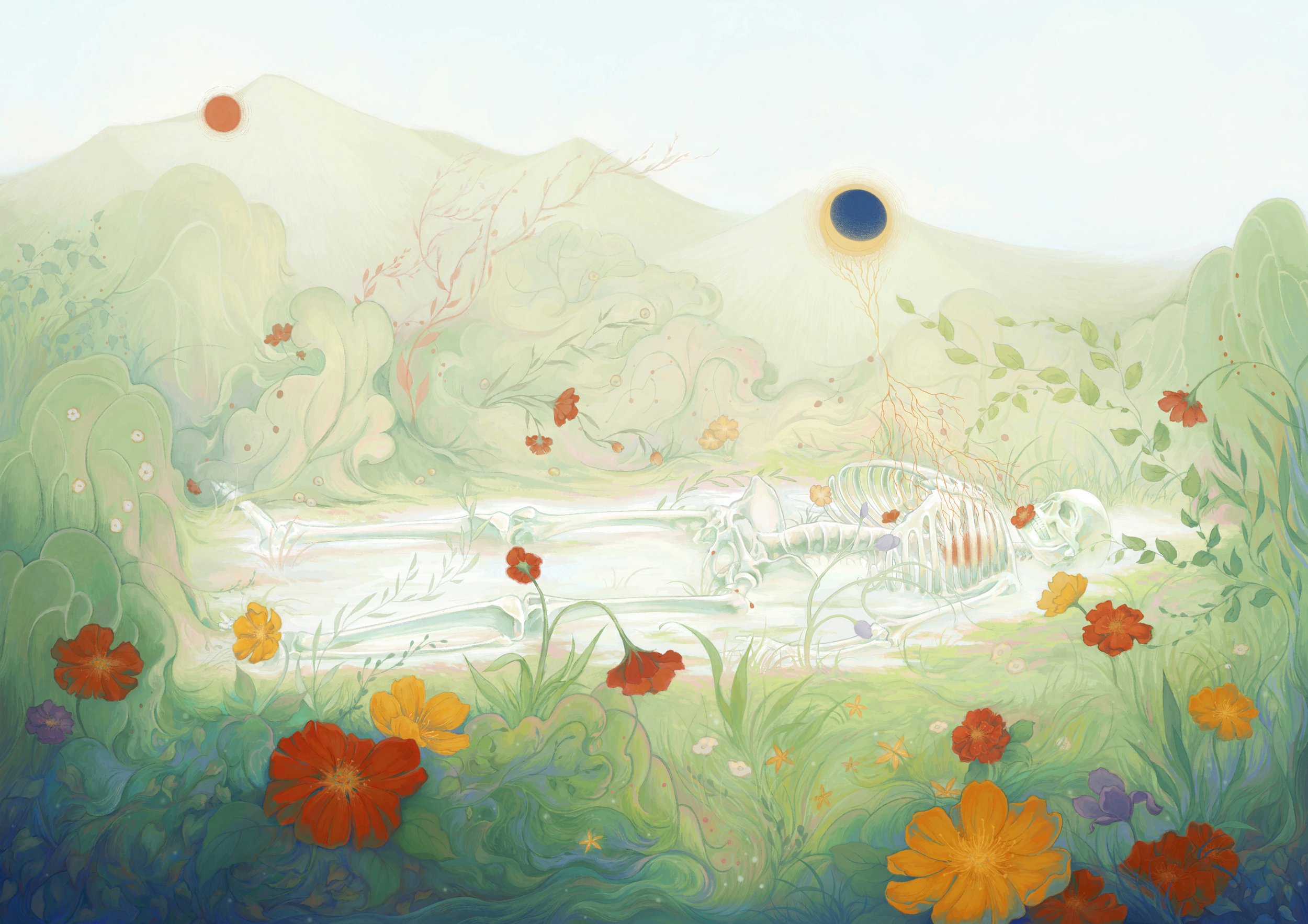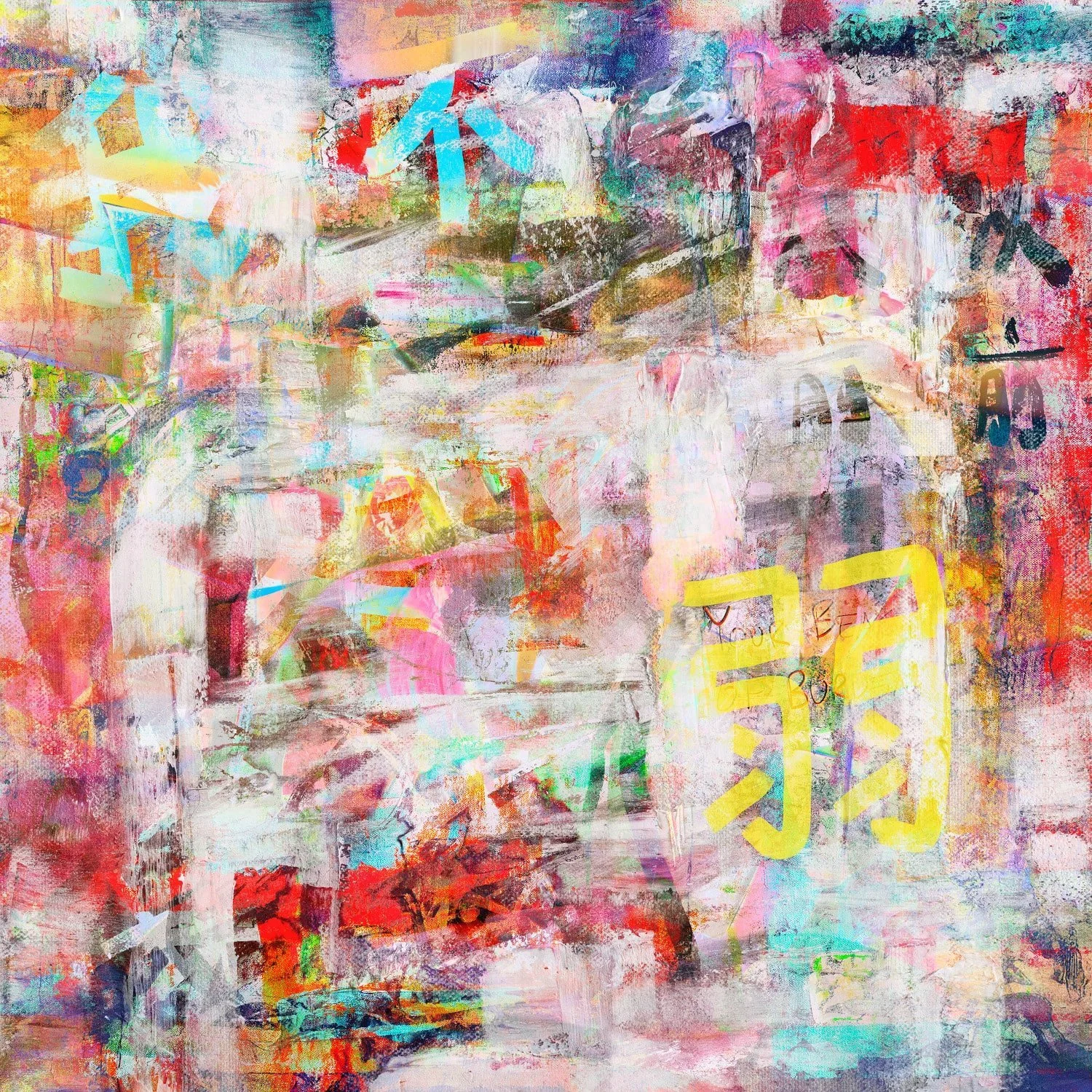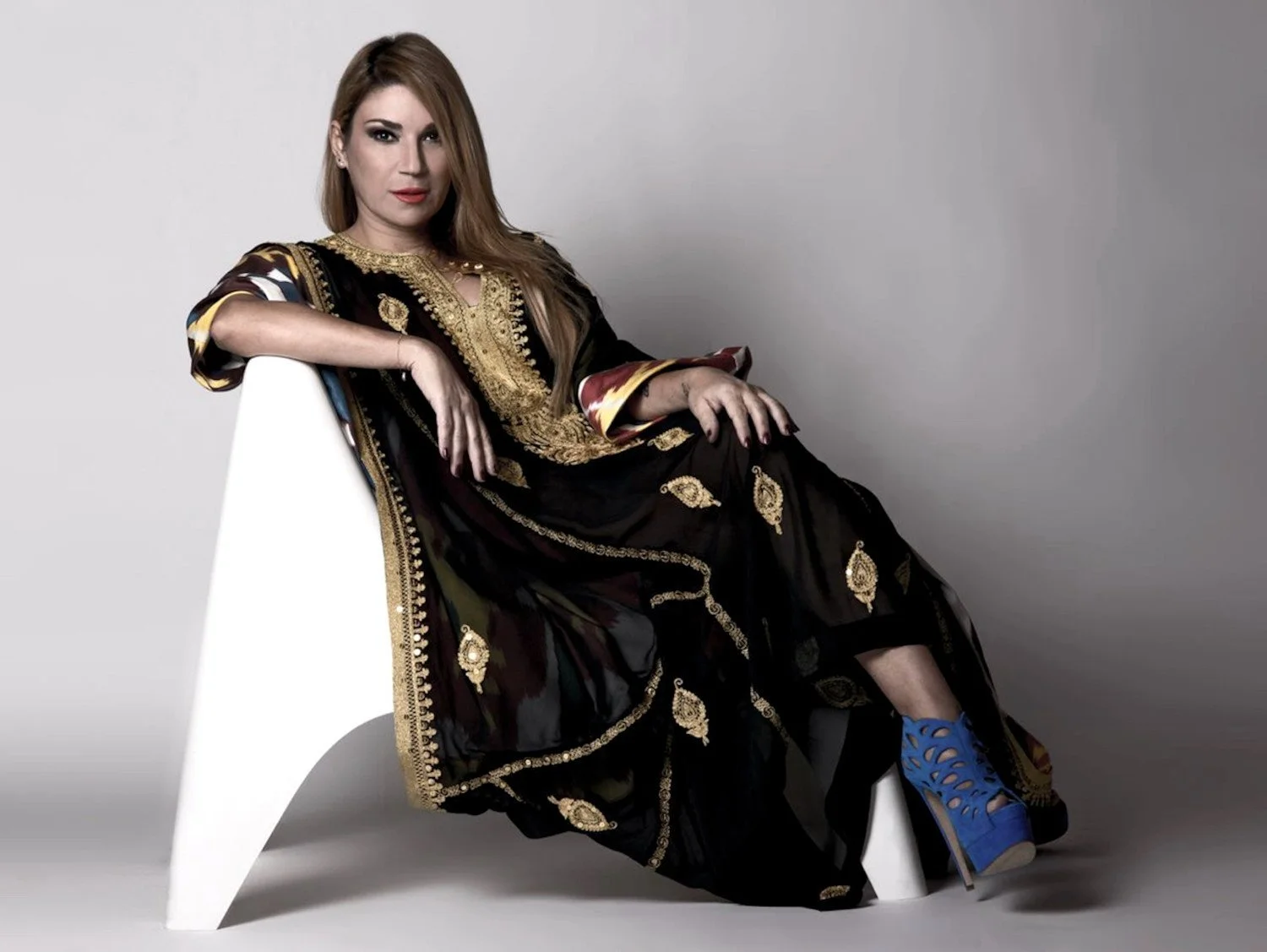10 Questions with Ruslana Nosak
Ruslana's work reflects a lifelong journey through different places, each of which has shaped and expanded her artistic vision. Rooted in architecture, her career began with structured forms, but have always felt the pull towards painting as a true vocation. Over the years, she's explored a range of mediums, including acrylic, oil, watercolor, ink, epoxy, pastel, pencil, 3D modeling, digital, and VR, embracing each for its unique, expressive qualities. Her experience spans illustration, teaching drawing, painting, and composition, allowing Ruslana to develop a deep understanding of both technique and form. In 2020, Ruslana moved from Moscow to Berlin, where her practice evolved to focus on the emotional landscapes of migrant life. Ruslana's work depicts the psychological and cultural complexities faced by individuals adapting to new countries and identities. In 2021, Ruslana embarked on a journey through eleven countries, continuing to explore themes of belonging and transience. This journey reinforced her realization that no matter where I am, I remain a visitor - even in my home country.
"For me, this sense of transience and the search for 'home' is an ongoing narrative that leaves my story, and my art, open-ended."
Ruslana Nosak - Portrait
ARTIST STATEMENT
Ruslana tells stories and invents fantastic characters. Sometimes, they are half human and half animal. Her artworks feature the transference of colors and images to show the growth of the human personality and soul. The artist calls it the dualism of intelligence and sensations. One part of the artwork is an abstract colored canvas shaped into a bright emotional form. Another part is figurative and plot-related. Oil is used as the base material to create depth, differentiate various color tones, and emphasize details. For Ruslana, a canvas is an open book. She shows the psychological states of a person in different situations. He turns into a hero of fairy tales and myths, where he overcomes difficulties and matures as a person. Ruslana places great emphasis on details and colors and draws inspiration from early Renaissance paintings, the Flemish painters, and German contemporary artists, defining the form of her artistic expression as surrealism.
The Time Series. Application People, Digital, 4625x4625 px, 2024 © Ruslana Nosak
INTERVIEW
Your artistic journey began with architecture before evolving into painting. How has your background influenced your approach to this medium?
My creative path really began with architecture, and it left a noticeable imprint on my approach to painting. Architecture taught me to think spatially, to consider proportions, structure, and composition, and to pay attention to details. In architecture, every element has to be considered in terms of functionality and interaction with the environment, and I have transferred this knowledge to painting. I often use geometric shapes, contrasts, and playful elements in my paintings, and I carefully consider the sketch, drawing it on a tablet before transferring it to the canvas.
On the other hand, painting has given me freedom from the strict framework that is inherent in architectural projects. It allowed me to experiment with color, distort shapes, playing with visual impressions rather than just structural solutions. My transition from architecture to painting was a natural continuation of my need to create but on a completely different, more expansive plane.
Manifesto of Freedom, Oil on canvas, 110x140 cm, 2020 © Ruslana Nosak
How did you choose painting over other mediums? What does it represent for you?
Painting has always attracted me with its unique ability to convey emotions and meanings through visual images. Although I am interested in various art forms, painting gives me the freedom to express my ideas in images in my own subjective way. It is a space where I can work with color and its influence, with composition, without being limited by any boundaries, like in architecture or other media.
For me, painting is a kind of dialog with the world. I write a book with images, where each stroke and color speaks a metaphorical perception of reality and invites the beholder to try on the image of its protagonist. Painting allows me to explore complex and multifaceted themes such as time, space, and the human condition without having to follow strict rules or forms. It is not only art but also a way of searching for meaning, a kind of inner process in which I can be both creator and explorer.
In 2020, you moved from Moscow to Berlin. How did your move shape the themes and narratives of your art?
Emigration was undoubtedly a milestone that deeply influenced my work. Berlin, with its multilayered history, multicultural diversity and special atmosphere, where walking down the street you can feel yourself in different corners of the Earth at the same time, became a kind of catalyst for thinking about the themes of belonging, identity and timelessness.
The subjects of my paintings were enriched with metaphors and philosophical arguments reflecting the experience of emigration: the feeling of being lost, the search for a new home and self in another culture and society, and the dialog between the past and the present. Studying German has allowed me to experience the works of Goethe, Schopenhauer, and Hegel, and meeting foreigners who shared their experiences inspired me to create images that symbolize the intersection of cultures, language barriers, and internal conflicts, the need for dialogue experienced by emigrants and people in difficult life situations.
Surrealism, with its ability to visualize the subconscious, is ideal for conveying such subtle and profound human states. I delved into the duality of the world: the gap between the familiar and the alien, the mind and the senses, the merging of the past with the present and the non-existent. The color palette became more saturated, acquiring unexpected combinations and reflecting the contrasts and richness of my new perception.
Taste of Series. Follow the Black Rabbit, Digital, 3980x5074 px, 2024 © Ruslana Nosak
The Time Series. Out in the Wild, Digital, 4157x5300 px, 2024 © Ruslana Nosak
Over the years, you have used a wide range of mediums, from traditional oils to modern VR. How do you decide which medium best suits the story you want to tell?
Choosing a medium can be compared to choosing a genre and language for writing a book. For me, creating a painting is writing a work of art. Oil, especially in the technique of flattering and sfumato, is like poetry or a novel, where each line slowly builds, layer by layer, creating a deep atmosphere and mystery. This method allows me to work with detail, to create subtle gradations of emotion, and to convey those nuances that take time to unfold.
If my idea is like a story that needs to be experienced instantly and intensely, I could choose AR, like a language of short, vivid phrases or visual metaphors. AR is like an interactive text where the reader becomes the protagonist, exploring the story in real time.
For me, deciding which medium to choose depends on how I see my "book": whether it will be a novel that requires focus and thoughtfulness or an interactive story where the viewer is immersed in the moment.
As you mention in your statement, the sense of transience and the search for home is a recurring narrative in your work. How does this theme manifest in your visual storytelling?
The feeling of the transience of time and, at the same time, its slow movement, as well as the search for a home, are reflected in my works through the use of color contrasts and geometric shapes and lines, and the characters of the stories face the need to interact with the unknown. The characters are intertwined by threads of communication with other people and the world, sometimes frightening or inspiring, repulsive or alluring. But primarily, the protagonist is confronted with themselves. The idea of a home within oneself comes to the fore, as the outside world simultaneously exists and dissolves, like a vision swept away by time.
Through a mixture of architectural motifs and cultural references, including contemporary political agendas, I explore not only the idea of home as a physical space but also its emotional dimension related to the search for belonging and participation in society.
These motifs combined together become a kind of map of the inner search for home. They reflect a universal story about the search for belonging in a world where time, culture and space are constantly changing.
Taste of Series. Splashes of Champagne, Digital, 3980x5074 px, 2024 © Ruslana Nosak
The Time Series. Feast in Time of Plague, Oil on canvas, 100x120 cm, 2024 © Ruslana Nosak
Fairy tales and myths play a significant role in your work. What draws you to these narratives, and how do they relate to the human condition?
Fairy tales of the peoples of the world and ancient Greek myths are able to penetrate into the human subconsciousness, becoming a universal language. They create the basis of symbols familiar to each of us from childhood, even if we do not realize their influence. They appeal to the deepest layers of the human psyche, shaping our understanding of life, struggle, and hope.
I turn to an exploration of Joseph Campbell's The Hero's Way. This archetypal journey - from challenge and overcoming fear to transformation and returning home with new knowledge - becomes a metaphor not only for individual experiences, but also for collective experience.
In my work, myths can come to life through symbolism: dark space, labyrinth, body of water, symbols of initiation between the world of the living and the dead are a reflection of the inner world of the protagonist. I explore the theme of meeting oneself, accepting imperfections in oneself to achieve harmony, and showing viewers and readers that every crisis is a step toward growth.
Myths also allow me to bridge different times and cultures, making stories both contemporary and timeless. They provide an opportunity to not only tell a story but to guide the viewer through an experience in which they can recognize themselves.
You’ve mentioned drawing inspiration from early Renaissance, Flemish painters, and German contemporary art. How do these influences inform your surrealist style?
The first time I saw Botticelli's paintings in person was at the Gemäldegalerie in Berlin. It was an unforgettable experience. The painting "Venus" came alive and seemed to come off the canvas of the black background.
Flemish painters such as Jan van Eyck and Vermeer, with their incredible skill in depicting light and shadow, thinking through details and meanings, strongly influenced my approach to light and shadow, creating depth and layering in the works. I am incredibly impressed by German painter Caspar David Friedrich's ability to bring a landscape to life without a hero in his works. I carry the creation of light volume into the more abstract forms characteristic of Surrealism, where light and shadow play their role not only as physical elements but also as symbols. Metaphors and allegories are my favorite techniques in creating paintings.
German contemporary art, in particular the works of Neo Rauch and Anselm Kiefer, whose works I was also lucky enough to see while living in Berlin, left a lasting impression and influenced my future work. I like Rauch's statement in an interview: "A good figural composition is more difficult to create than an abstract image. I could be a great abstractionist, but it's boring". And also, his self-definition: "I am a shepherd of images," is very close to me. As for Kiefer, his deep work with material with a touch of German Romanticism and emotionality at the limit inspired me to experiment with new ways of expressing psychological tension and inner conflict.
All these influences come together in my surrealist approach, where elements of the real world are presented through the prism of metaphorical, allegorical images, and the painting itself becomes a space for personal interpretation and experience.
Psycho Series. Bitter Girl, Oil on canvas, 120x140 cm, 2022 © Ruslana Nosak
In 2021, you embarked on a journey through eleven countries. How did this experience influence your perspective on themes of belonging and identity?
My journey through 11 countries starting in 2021 - Turkey, Austria, Latvia, Portugal, Spain, Italy, Georgia, Belgium, France, Lithuania and the Netherlands - has been a deep exploration of themes of belonging and identity. Each of these countries brought their own unique cultural contexts, images and rhythms of life that sparked a rethinking of what it means to be "at home" and who I am in this world.
In Istanbul, where the East meets the West, the dynamics of identity formed at the intersection of cultures are vividly felt. The labyrinthine bazaars and ancient mosques surrounded by modern buildings have become a metaphor for the inner search for balance between tradition and modernity.
The cities of Austria and Germany are an emphasis on order and structure, a calibrated life. Here I reflected on stability and security, which are often associated with belonging, but also emphasize the contrast with my inner freedom and changeability.
Latvia and Lithuania are Nordic austerities with cold colors and melancholy atmospheres. The medieval architecture of Riga and Vilnius, with narrow streets paved with stone and covered with snow drifts, has become a symbol of isolation and, at the same time, shelter and peace at home.
Portugal, Spain, Italy are brightness and openness. Here I reflected on the ease of belonging that comes through the simple joys of life: light, color, taste, contemplation of nature, and family bonds. In Spain or Portugal, a sense of community is evident through conversations in the streets where history and everyday life are intertwined.
Belgium is a wealth of cultures where Flemish and Walloon coexist. It is an example that identity can be flexible and multi-composed. Brussels, as a symbol of a united Europe, and cozy Bruges with its historic canals show that belonging is not always unity, but also a wealth of differences.
France, on the other hand, emphasized the power of cultural heritage and national pride. Paris inspired thoughts of freedom and creativity, while the provincial landscapes of Normandy reminded me of deep roots and connection to tradition.
Georgia is all about contrasts. In Tbilisi, the chaotic mix of ancient wooden balconies, modern buildings, and crumbling faded high-rises epitomize the juxtaposition of past and present. From my window, I watched Mount Kazbek. It would disappear or reappear depending on the weather and made me think about the ethereality of identity.
In the Netherlands, I encountered a sense of cosmopolitanism - of belonging not to a particular place but to a world where languages, styles, and ideas mix.
The experience of living in so many different places has led me to the conclusion that belonging is not limited to one space but is an ever-changing state of mind. Identity, in turn, turns out to be multi-layered: it is both what you take from different places and what you bring with you. My travels have taught me to see home not as a geographical point but as the intersection of my inner world with the many parallel worlds of the spaces around me, in each of which I define myself anew and differently.
Boy, Oil on canvas, 120x80 cm, 2019 © Ruslana Nosak
What projects are you currently working on, and how do you see your work evolving in the future?
At the moment, I am working on a new series called "The Taste of", which is a logical continuation of "The Time" series. It is about living a certain moment in the present and trying to capture it, which is almost impossible because the next second, we are different. I am also looking at the possibility of realizing collaborations using light and sculpture in addition to painting.
Lastly, you have already lived abroad and traveled extensively; where do you see yourself and your work five years from now?
Five years from now, I see myself continuing to work on the international scene, where my style and approach will be further explored and developed. I aim to organize new solo exhibitions and actively participate in major international projects, expanding my audience and establishing collaborations with galleries, museums, and collectors around the world. One of the main directions will be the integration of other mediums, such as light and sculpture, as well as new technologies into my work, which will broaden the horizons for creative exploration. I also plan to create large-scale interdisciplinary projects that address important social and cultural issues. It is important to me that my work continues to influence public debate and contribute to the development of contemporary art on a global level.
Artist’s Talk
Al-Tiba9 Interviews is a promotional platform for artists to articulate their vision and engage them with our diverse readership through a published art dialogue. The artists are interviewed by Mohamed Benhadj, the founder & curator of Al-Tiba9, to highlight their artistic careers and introduce them to the international contemporary art scene across our vast network of museums, galleries, art professionals, art dealers, collectors, and art lovers across the globe.






















